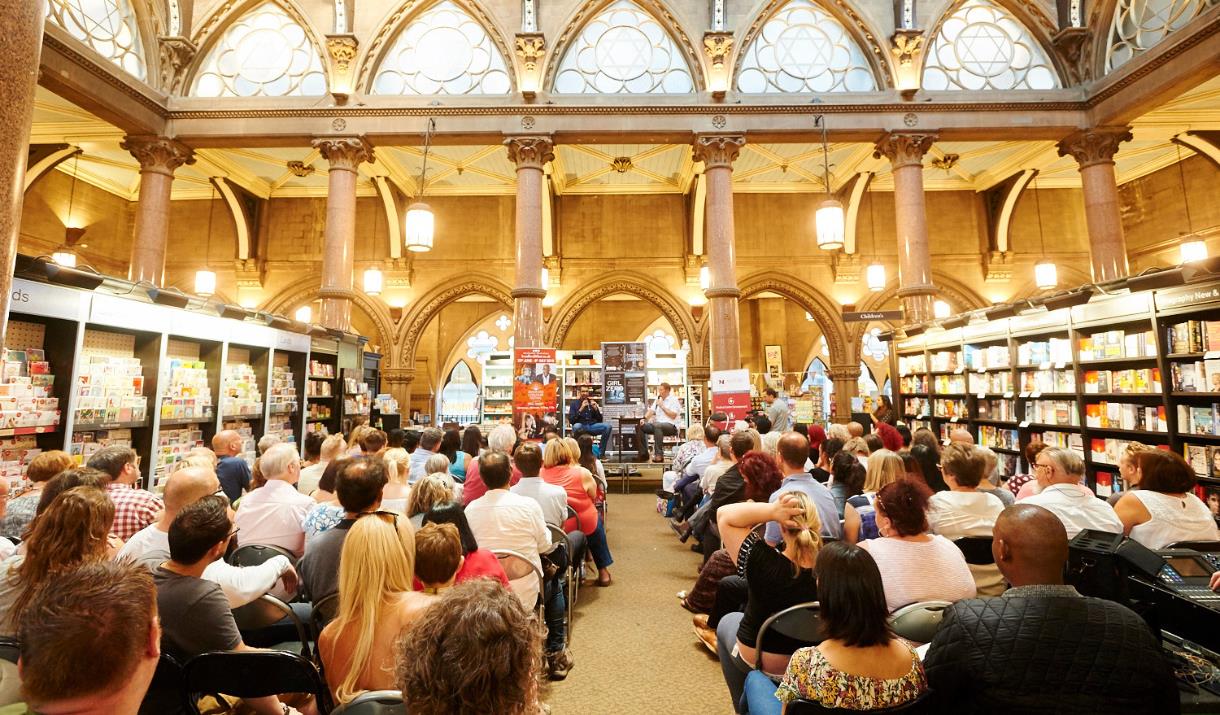
My wife and I went to our first game of the season recently: Liverpool v Everton, in the pouring rain. The stuff of dreams.
It’s a bit of a walk from the train station to Anfield and the whole way, I’d been so excited to get that first glimpse of the stadium, the fans, the atmosphere, the buzz. We turn a corner and suddenly you can see Anfield looming large between rows of houses. One more street and then we’re there and … flowers on the floor. Tributes to Diogo Jota.
Oh yeah. Diogo Jota’s dead.
We get a pie, a programme for Jo’s Mum and Dad (who lets us use their season tickets; thanks Jeff and Janet), find our seats. Kick off. Flags wave from the Kop as they normally do and … there’s one of Diogo Jota.
Oh yeah. Diogo Jota’s dead.
10 minutes in and Ryan Gravenberch scores a beautiful goal to make it 1-0 and Anfield is roaring. Then 20 minutes hits and everyone stands up to sing Diogo Jota’s song (“Oh, he wears the number 20 …”).
Oh yeah. Diogo Jota’s dead.
I hadn’t forgotten that Diogo Jota had died, but being at Anfield made me remember that Diogo Jota had died.
Being at Anfield – seeing the flowers and the flags, singing his song – all of it hit me and my wife unusually hard. With each new reminder of Jota’s death, I was taken back to the moment a mate messaged me to ask if I’d seen the news of his car crash. There I was again, no longer at Anfield watching the footy, but stood in my house, staring at my phone in disbelief.
For the last year or so, St. Mellitus College (where I’m lucky enough to teach) has been hosting a series of public events to celebrate 1700 years since the Council of Nicaea. The events have been fantastic and, one of the perks of the job is that I’ve had loads of chances to learn from some of the best theologians alive at these events.
In March 2025, Professor Trevor Hart was giving one of the public lectures for this project. The next day, I and the rest of the staff team had a chance to speak with the professor about his paper. One of the things that struck me in the conversation was what he said about trauma.
One of the key characteristics of trauma, he said, is that it interrupts our sense of time. I’m going about my day and – all of a sudden – something triggers my trauma response and the past (that thing or event that causes my trauma) is made very present again. I see it and feel it as if it I’m living it for the first time again; it is re-present-ed to me.
And this is exactly what happened to me, 20 minutes into the Merseyside Derby.
Look, I’m not saying I have PTSD about Jota’s death or anything like that. I didn’t know Jota; frankly he’s not mine to grieve and I don’t want to co-opt the loss that Jota’s friends and family will be feeling.
But, our first trip to Anfield since Jota’s death gave us something of a taste of how trauma re-present-s itself. The past became all too present as I stood there, thinking about the moment I heard of Jota’s death.
But, for a Christian theologian (like Hart), this aspect of trauma is very significant. Because this is exactly what happens in the sacraments.
The sacraments are bits of Church life in which Jesus Christ is really and especially present. Different Churches will disagree on exactly which events or rituals constitute the sacraments but most would say that baptism and Holy Communion definitely do.
Let’s take Holy Communion (sometimes called the Eucharist, or Lord’s Supper) as an example. Again, this will look different in different Churches, but in holy communion bread and wine is blessed and said to become Jesus’ body and blood. And here we see the rupture of past and present. The body and blood of Christ, broken and shed on the cross before being raised again, is re-present-ed here for me, now. It is made really present (both in the physical and temporal sense of that word).
Time and space collapse in on themselves as Jesus Christ – who created time and space in the first place and so can do what He wants with them, thank you very much – bends them to His will just to be present here, and now, with me.
I wonder whether something similar happens in trauma, too? If trauma, too, might function as a sacrament, of sorts? If the moment of the past rupturing the present when trauma responses are triggered is precisely where Jesus Christ seeks to meet and really be present with those people?
It certainly felt like it in the roaring, red cathedral of Anfield Road. The moments of remembering Jota’s life and having his death re-present-ed to us felt genuinely … sacred.
And look, it was the Merseyside Derby, our first in-person game of the season; I was obviously excited, so maybe I was just primed to be emotional when these memories of Jota appeared. Maybe. Who knows? But it would be entirely in keeping with what the Church knows of God’s character that he meets with us precisely at those points where time and space begin to fall apart: in the sacraments, and in trauma.
There will be flowers and banners and songs for Jota for some time yet. Whenever we drive from our house into Liverpool city centre, we drive by a huge mural of Jota that’s been painted onto the side of a pub.
It won’t be possible to forget Jota, and there will be lots of prompts to remember him. And in those moments of remembering, time and space may well continue to collapse in on itself. I may find myself once again in my house, staring aghast my phone. And I may well find that Jesus Christ is there with me too.
Support Seen & Unseen
Since Spring 2023, our readers have enjoyed over 1,500 articles. All for free.
This is made possible through the generosity of our amazing community of supporters.
If you enjoy Seen & Unseen, would you consider making a gift towards our work?
Do so by joining Behind The Seen. Alongside other benefits, you’ll receive an extra fortnightly email from me sharing my reading and reflections on the ideas that are shaping our times.
Graham Tomlin
Editor-in-Chief






